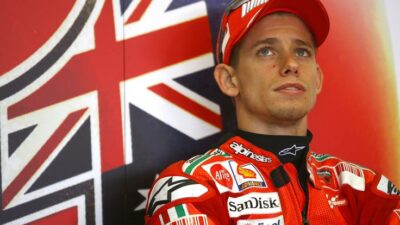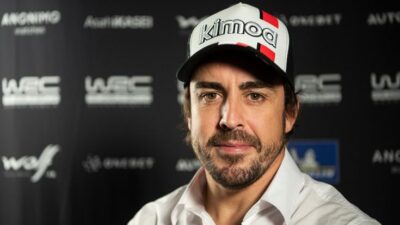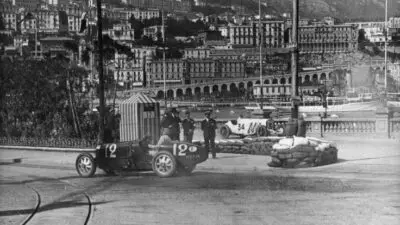Andreas Nikolaus “Niki” Lauda was more than just a Formula 1 driver. Born in 1949 to a wealthy Austrian family, he defied their expectations to pursue racing, eventually becoming one of the sport’s most influential figures. His career spanned from 1971 to 1985, during which he claimed three World Championships and cemented his place in motorsport history.

Lauda’s legacy extends far beyond his impressive racing record, as his near-fatal crash at the 1976 Nürburgring and subsequent comeback just 42 days later stands as one of the most remarkable displays of determination in sporting history. This incredible return to racing after suffering severe burns and inhaling toxic fumes showcased his extraordinary willpower and changed how the world viewed both the dangers of Formula 1 and the human capacity to overcome adversity.
Even after his racing career, Lauda continued to shape Formula 1 as a team executive and analyst until his passing in May 2019. His rivalry with James Hunt captivated audiences worldwide and later inspired the film “Rush,” while his advocacy for improved safety measures fundamentally transformed the sport. Lauda’s fearless approach to racing and uncompromising personality made him a true icon whose influence continues to resonate throughout motorsport.
Key Takeaways
- Niki Lauda won three Formula 1 World Championships and revolutionized racing with his analytical approach and unwavering determination.
- His miraculous comeback just 42 days after a devastating crash at Nürburgring stands as one of sport’s greatest examples of human resilience.
- Lauda’s influence extended beyond his driving career through his work as a team executive, aviation entrepreneur, and tireless advocate for Formula 1 safety improvements.
Early Life and Beginnings

Niki Lauda’s journey to racing greatness began in his hometown of Vienna, where his family’s expectations clashed with his dreams of speed and competition. His early passion for motorsport would prove stronger than tradition.
Family Background in Vienna
Andreas Nikolaus “Niki” Lauda was born on February 22, 1949, in Vienna, Austria. He came from a wealthy and influential family with deep roots in Austrian business. His grandfather was a prominent industrialist in the paper manufacturing industry.
The Lauda family expected Niki to follow the traditional path into business or banking. They had clear plans for him to join the family’s paper manufacturing enterprise rather than pursue racing.
This privileged upbringing provided Niki with opportunities, but also created tension when he began showing interest in motorsport rather than business. His family strongly disapproved of his racing ambitions.
Passion for Racing in Austria
Despite family opposition, Lauda developed an early fascination with cars and speed. Growing up in post-war Austria, he was captivated by the emerging motorsport scene in Europe.
As a teenager, Lauda would often attend local racing events around Vienna. He studied driving techniques and car mechanics with remarkable dedication.
Austria’s growing racing culture in the 1960s provided an environment where his passion could develop. The country’s alpine roads and racing traditions helped shape his skills.
When Lauda decided to pursue racing professionally, he faced a difficult choice. He had to choose between family expectations and his burning ambition, ultimately selecting the path that would lead him to racing glory.
First Steps in Motorsport
Lauda’s racing career began in defiance of his family. He entered his first competitions using a Mini Cooper in local hill climbs and circuit races.
Without family support, he took a bold financial risk. Lauda secured his first professional opportunity by taking out a substantial bank loan, reportedly secured against his life insurance policy.
His early racing efforts in Formula Vee and Formula 3 showed promise. These entry-level racing categories provided Lauda the foundation to develop his technical understanding and driving skill.
In 1971, Lauda made a critical move by purchasing his way into Formula 2 with March Engineering. This significant investment in his own career demonstrated both his commitment and business acumen. His technical feedback impressed teams, setting the stage for his future Formula 1 career.
Rise in Formula 1

Niki Lauda’s journey to Formula 1 stardom began with determination and financial sacrifice. His early career showcased both technical understanding and driving talent that would later define his legendary status.
March Team and Formula 1 Debut
Lauda entered Formula 1 in 1971 with the March team, but his path was far from traditional. Despite coming from a wealthy family, they disapproved of his racing ambitions. Determined to succeed, Lauda took out personal loans to buy his way into F1.
His debut season proved challenging in the uncompetitive March car. The team struggled with reliability and performance issues, making it difficult for the young Austrian to showcase his true abilities.
Despite the difficult circumstances, Lauda demonstrated his technical knowledge and analytical approach to racing. His understanding of car mechanics and setup would later become one of his greatest strengths in F1.
Years with BRM
In 1973, Lauda joined the BRM team, which marked an important step in his career development. Though BRM was past its prime, Lauda managed to impress with his technical feedback and occasionally strong performances.
During his time at BRM, Lauda formed a crucial relationship with teammate Clay Regazzoni. When Regazzoni returned to Ferrari in 1974, he recommended Lauda to Enzo Ferrari.
The BRM period was pivotal for Lauda’s development as a driver. He refined his precise driving style and built a reputation as someone who could extract maximum performance from machinery through technical understanding rather than just raw speed.
Breakthrough at Ferrari
Lauda’s career transformed when he joined Ferrari in 1974. The partnership immediately showed promise with Lauda securing his first Grand Prix victory in Spain. His meticulous approach to car setup and race strategy perfectly complemented Ferrari’s resources.
The 1975 season brought Lauda’s first World Championship. He dominated with five Grand Prix victories and remarkable consistency. His technical feedback helped develop the Ferrari 312T into one of the most successful F1 cars of the era.
Ferrari’s decision to hire Lauda proved transformative for both parties. His analytical mindset and unwavering focus on performance helped revitalize the Italian team after years of struggling. The Austrian driver’s methodical approach to racing became his trademark during this breakthrough period.
World Championships and Major Victories

Niki Lauda secured three Formula 1 World Championships during his remarkable career, cementing his place among the sport’s greatest drivers. His championship victories came in 1975, 1977, and 1984, showcasing his exceptional talent across different eras of F1.
First World Championship Title
Lauda’s journey to becoming a champion began with his move to Ferrari in the mid-1970s. After joining the Italian team, he quickly established himself as a formidable competitor on the track.
The Austrian driver’s technical knowledge and methodical approach to racing proved invaluable. He worked closely with Ferrari engineers to develop the car, transforming it into a championship-winning machine.
In 1975, Lauda demonstrated remarkable consistency. His driving philosophy emphasized learning from mistakes to improve performance, which paid dividends on the track.
He secured crucial victories in Monaco, Belgium, Sweden, France, and the USA, displaying both tactical brilliance and raw speed throughout the season.
The 1975 and 1977 Seasons
The 1975 season showcased Lauda at his peak. Driving the Ferrari 312T, he dominated the championship with five race victories and consistent podium finishes.
His precision driving style and analytical approach to racing made him nearly unbeatable when the car performed well. Ferrari’s technical superiority combined with Lauda’s talent created a perfect championship formula.
Despite his horrific crash at the Nürburgring in 1976, Lauda made an astonishing comeback. He returned to racing just six weeks after nearly losing his life, showing incredible determination.
The 1977 season proved Lauda’s mental strength was unmatched. He secured his second championship with Ferrari despite ongoing tensions with the team, which ultimately led to his departure before season’s end.
Third Title with McLaren
After a brief retirement, Lauda returned to Formula 1 in 1982 with McLaren. His comeback demonstrated his enduring passion for racing and competitive spirit.
The 1984 season saw Lauda facing off against his talented teammate Alain Prost. Their battle became one of F1’s greatest intra-team rivalries, with both drivers pushing each other to new heights.
Lauda won his third World Championship by the slimmest margin in F1 history—just half a point. This achievement came seven years after his previous title, highlighting his remarkable longevity in the sport.
What made this title particularly impressive was Lauda’s strategic approach. While Prost secured more race wins, Lauda’s consistency and tactical brilliance ultimately gave him the championship edge.
The 1976 Nürburgring Crash and Comeback

Niki Lauda’s 1976 season was defined by an extraordinary journey from near-death to championship contention. His accident and return to racing just six weeks later remains one of Formula 1’s most inspiring stories of human determination.
Crash at the German Grand Prix
On August 1, 1976, during the German Grand Prix at Nürburgring, Lauda suffered a catastrophic crash on the second lap. His Ferrari swerved off track, hit an embankment, and burst into flames. The reigning world champion was trapped inside the burning car.
Fellow drivers Brett Lunger, Arturo Merzario, Harald Ertl, and Guy Edwards risked their lives to pull him from the wreckage. Lauda sustained severe burns to his face and head, and his lungs were damaged from inhaling toxic fumes.
At the time of the accident, Lauda had been leading the championship by 23 points over his rival James Hunt. The crash happened after Lauda had actually voiced safety concerns about the dangerous Nordschleife circuit.
Recovery and Italian Grand Prix Return
Lauda’s condition was so critical that a priest administered last rites at the hospital. Against all medical expectations, he survived. While recovering, he underwent multiple painful surgeries and skin grafts.
Just 42 days after his crash, Lauda made what many consider Formula 1’s most courageous comeback at the Italian Grand Prix in Monza. He finished an astonishing fourth place despite being in excruciating pain.
His Ferrari team manager Daniele Audetto described him as looking “like a ghost” upon his return. Lauda’s comeback required him to wear a specially modified helmet to accommodate his bandages, and he endured the agony of having the bandages stick to his healing wounds.
Title Decider at the Japanese Grand Prix
By the season finale at the Japanese Grand Prix, Lauda had remarkably clawed back into championship contention. Despite missing two races, he entered the final round at Fuji leading Hunt by just three points.
The race took place in torrential rain and dangerous conditions. Lauda, still suffering from his injuries and with impaired tear ducts affecting his vision, made the brave decision to withdraw after two laps.
“My life is worth more than a title,” he famously declared. Hunt finished third, securing the championship by a single point. Though Lauda lost the title, his decision showcased his remarkable clarity and strength of character.
This season became the subject of the award-winning film “Rush” and cemented Lauda’s legacy not just as a champion, but as a symbol of extraordinary human resilience. He would return to win two more world championships in 1977 and 1984.
Rivalry with James Hunt

Niki Lauda and James Hunt developed one of Formula 1’s most captivating rivalries during the 1970s, defined by their contrasting approaches to racing and culminating in the dramatic 1976 season. Their competition transcended the track and left a lasting impact on F1.
Contrasting Personalities and Racing Styles
Lauda and Hunt represented polar opposites in the Formula 1 paddock. Lauda was methodical and calculating, earning the nickname “The Computer” for his precise, technical approach to racing. He focused on car setup and race strategy with remarkable attention to detail.
Hunt, conversely, embodied the playboy image with his charismatic personality and risk-taking driving style. The British driver was known for his flamboyant lifestyle and devil-may-care attitude that contrasted sharply with Lauda’s disciplined approach.
Their rivalry began in Formula 3 in 1970, years before their famous F1 battles. Despite their professional competition, the two maintained a genuine friendship off the track, respecting each other’s abilities despite their differences.
The Intense 1976 Season
The 1976 Formula 1 season marked the pinnacle of the Hunt-Lauda rivalry. Lauda, driving for Ferrari, began the season dominantly, building a substantial championship lead. His campaign took a dramatic turn at the German Grand Prix at Nürburgring on August 1, 1976, when he suffered a horrific crash.
Lauda’s Ferrari burst into flames, leaving him with severe burns and lung damage. Remarkably, after missing just two races, he returned to competition only six weeks later, his face still bandaged from his injuries.
Hunt, driving for McLaren, capitalized during Lauda’s absence and narrowed the championship gap. The season culminated in the rain-soaked Japanese Grand Prix, where Lauda withdrew due to dangerous conditions while Hunt finished third, securing the world championship by a single point.
Influence on Formula 1 History
The Hunt-Lauda rivalry elevated Formula 1’s global profile and remains one of the sport’s most legendary battles. Their competition represented more than just two drivers fighting for championships—it symbolized different philosophies of racing and life.
Their story gained renewed attention through the 2013 film “Rush,” introducing their rivalry to a new generation of fans. The dramatic narrative of their 1976 season, with Lauda’s near-fatal crash and incredible comeback, remains one of F1’s most compelling stories.
The rivalry also drove significant safety improvements in Formula 1. Lauda’s accident highlighted the dangers of the sport, and his advocacy afterward led to crucial safety reforms on circuits worldwide.
The Lauda-Hunt competition continued until Hunt’s retirement in 1979, though their 1976 battle remains their most famous confrontation and a defining chapter in Formula 1 history.
Impact and Lasting Legacy

Niki Lauda’s influence extended far beyond his racing championships, transforming Formula 1 through his advocacy for safety, analytical approach to the sport, and mentorship of future champions. His pragmatic personality and technical insights continue to shape motorsport today.
Advocacy for Safety in Motorsport
Lauda’s near-fatal crash at the Nürburgring in 1976 became a turning point for safety in Formula 1. After his accident, he became a vocal champion for improved safety measures in the sport. He pushed for better track conditions, mandatory safety equipment, and enhanced medical facilities at racing circuits.
His persistence led to significant changes in how Formula 1 approached driver protection. Lauda frequently challenged race organizers and the F1 governing body to prioritize driver safety over spectacle.
Today’s Formula 1 is considered one of the safest racing series in the world, due in part to the standards Lauda helped establish. His advocacy created a foundation for the continuous safety improvements that protect modern drivers.
Role as an F1 Analyst and Team Advisor
After retiring from racing, Lauda transitioned into management and advisory roles where his technical knowledge proved invaluable. He served as a consultant for Ferrari, team principal at Jaguar, and most notably, as non-executive chairman at Mercedes F1.
At Mercedes, Lauda was instrumental in convincing Lewis Hamilton to join the team in 2013. This decision transformed Mercedes into the dominant force in Formula 1 for years to come.
His analytical approach and strategic thinking helped Mercedes secure multiple world championships. Team members respected his straightforward communication style and ability to solve complex problems quickly.
Lauda also worked as a Formula 1 analyst for German television, where his honest, no-nonsense assessments made him a trusted voice in motorsport commentary.
Influence on Future Generations
Lauda’s comeback from his devastating accident continues to inspire drivers across motorsport disciplines. His story of resilience and determination serves as a powerful example for athletes facing adversity.
Many current Formula 1 drivers cite Lauda as a key influence. His methodical approach to racing—focusing on car setup and race strategy over pure speed—revolutionized how drivers prepare for competitions.
Beyond his driving technique, Lauda’s business acumen demonstrated how racing knowledge could translate to success in team management. His career path created a template for drivers looking to remain in Formula 1 after their racing days end.
Lauda’s legacy lives on through the Niki Lauda Trophy, awarded to outstanding contributors to motorsport, ensuring his impact on Formula 1 continues for generations to come.



